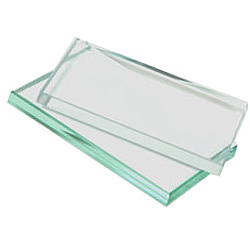Selecting Glass
Don't underestimate the importance of the glass you choose to put on your treasures. Each type of glass has specific benefits and can dramatically effect your ability to enjoy your artwork.
- Museum Glass® - is the best glazing option for all framed works of art. Museum Glass is the highest quality anti-reflective picture framing glass available that is nearly invisible on a picture. It protects against 99% of harmful indoor and outdoor UV light rays and has the highest light transmission along with the lowest reflection rating of any other glass product. The result is consistent, durable quality and the most attractive display for artwork.
- Conservation Reflection Control Glass - with 99% UV Protection is chemically finished on one side, scattering light as it strikes the glass. This matte-like finish enhances the beauty of the artwork by protecting the piece from unwanted glare or distortion. Additionally, the UV protection helps protect fading, discoloration and embrittlement caused by harmful light rays.
- Conservation Clear Glass - Over time, indoor and outdoor ultraviolet rays take a toll on artwork and cause fading. Paper can become faded, discolored, and brittle, causing irreversible damage that ruins the artwork. Conservation Clear framing glass with 99% UV protection helps protect art from fading by blocking harmful indoor and outdoor light rays, preserving art for years longer than regular glass.
- Plexiglass/Acrylic - Acrylic is generally used with artwork that is very large or heavy, as it reduces the total weight of the finished piece. It can also be used for art that will be hung in high traffic areas or areas where broken glass would be a hazard, such as a child's room. You may also consider Acrylic if your art is extremely valuable or irreplaceable, since it won't damage your art if it's broken. Acrylic is also available with the same conservation properties as glass.

